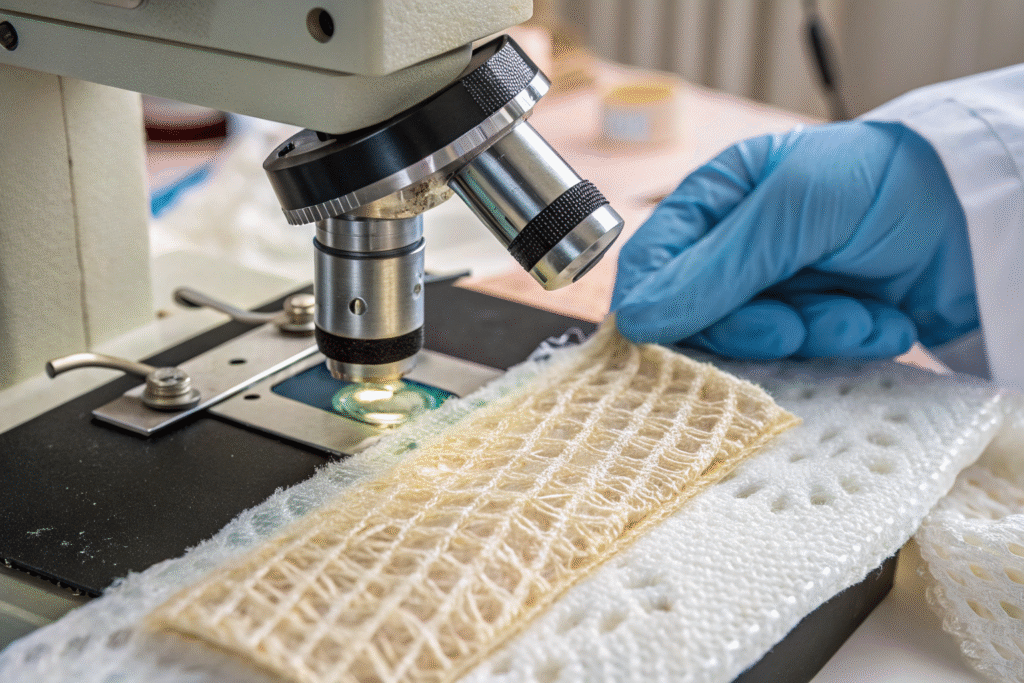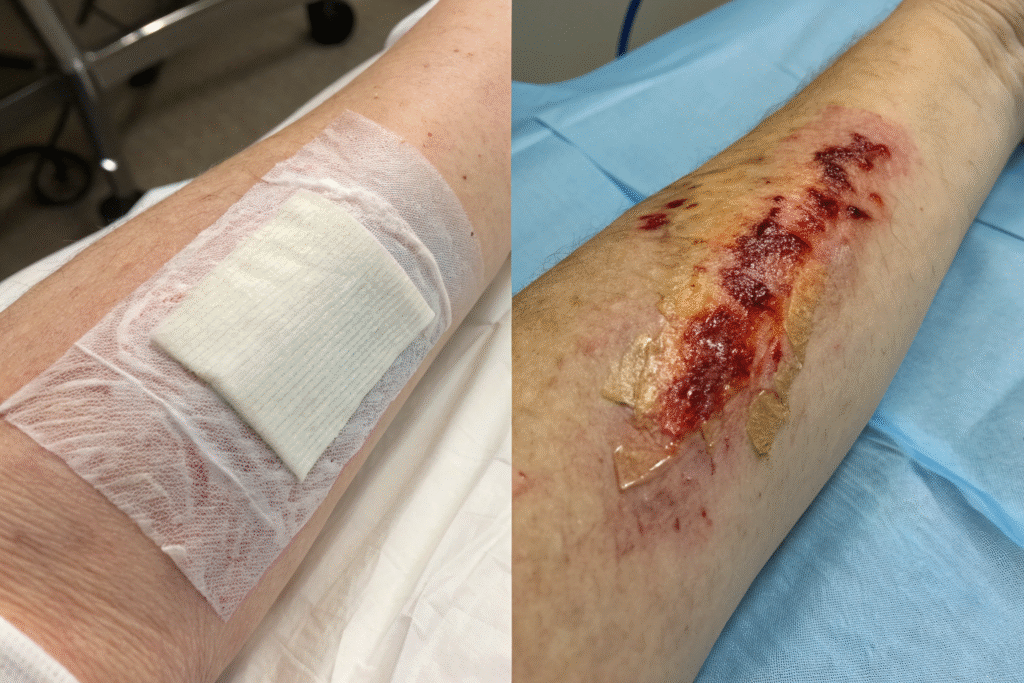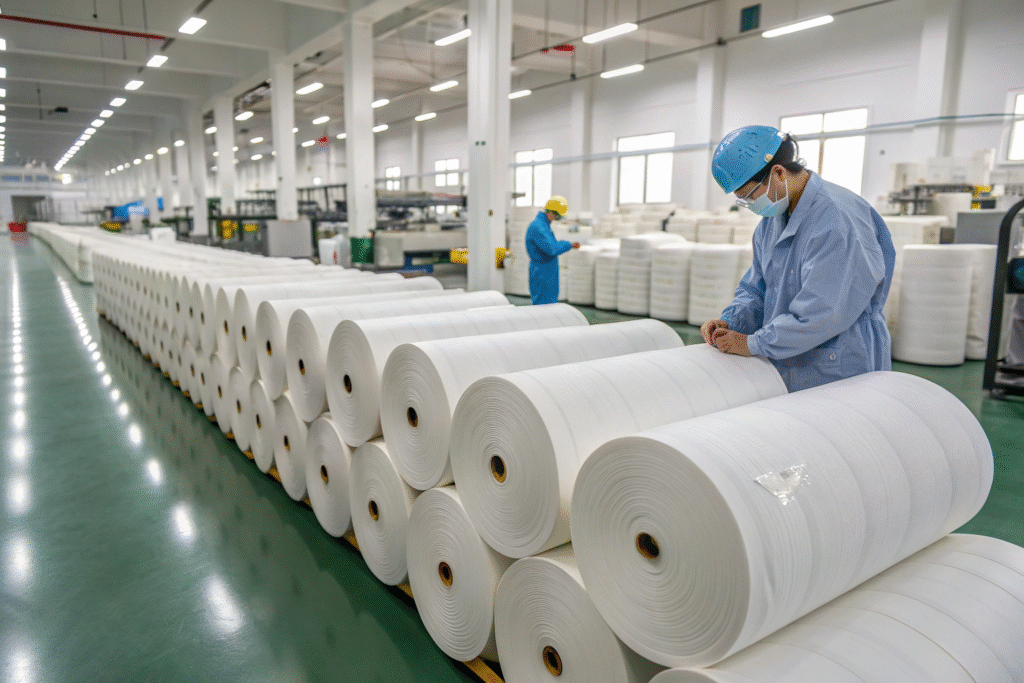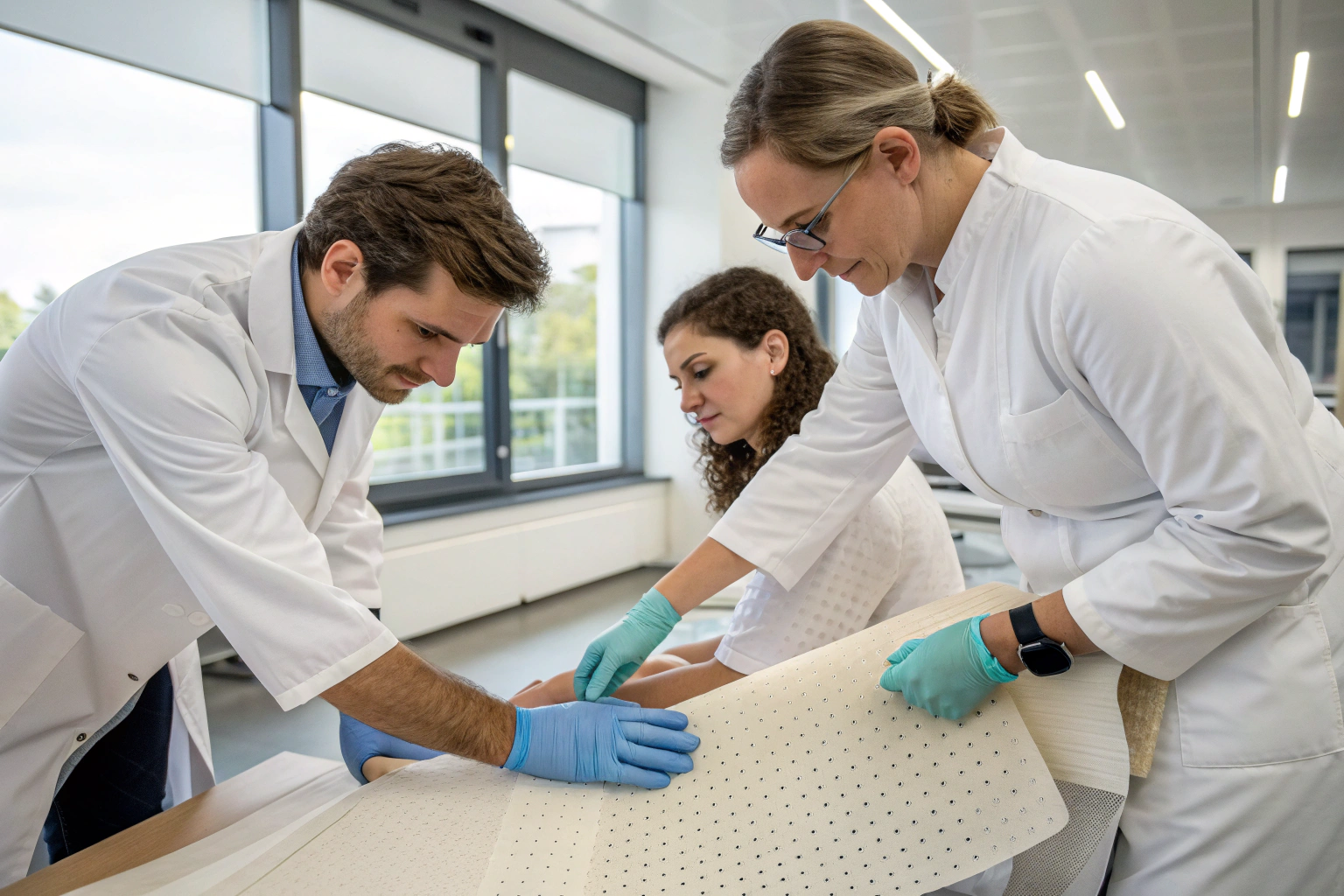Chitosan-coated wound dressing fabrics are gaining global attention for their exceptional healing properties, biocompatibility, and sustainability. For healthcare buyers, medical textile distributors, and hospital procurement teams, these advanced fabrics offer unique advantages that go far beyond traditional dressings. In this article, I’ll share why chitosan-coated fabrics stand out in the competitive wound care market, backed by years of textile manufacturing expertise.
By combining our textile engineering capabilities with advanced biomedical coating technologies, we have created a product that blends clinical effectiveness with sustainable production. Chitosan, derived from natural sources like crustacean shells, brings antibacterial, biodegradable, and moisture-retentive benefits—making it a game-changer for modern wound management.
If you are evaluating suppliers or seeking to upgrade your medical textile range, understanding the real advantages of chitosan-coated wound dressings will help you make an informed decision that benefits patients, healthcare providers, and your bottom line.
How Do Chitosan-Coated Dressings Promote Healing?
Chitosan is a naturally occurring biopolymer obtained from chitin, the main component in crustacean shells. When applied as a coating on wound dressing fabrics, it creates a protective, bioactive surface that accelerates healing. It works by interacting with cell membranes to stimulate tissue regeneration, reduce inflammation, and minimize infection risks.

What Makes Chitosan Naturally Antibacterial?
Chitosan carries a positive charge that binds to negatively charged bacterial cell walls, disrupting their structure and preventing growth. This antimicrobial property reduces the risk of infection without the need for synthetic chemicals, which is particularly important in sensitive wound care applications.
How Does Chitosan Enhance Moist Wound Healing?
The chitosan coating forms a thin, breathable film that retains optimal wound moisture. This helps prevent scabbing and supports faster epithelialization. Maintaining a moist environment reduces patient discomfort and minimizes scarring over time.
Are Chitosan Dressings Safe for All Skin Types?
Chitosan’s natural origin makes it hypoallergenic for most patients. Unlike some synthetic antimicrobials, it does not irritate the skin or disrupt healthy cells. It has been used for decades in various biomedical applications, including surgical sutures and drug delivery systems.

Is Chitosan Biocompatible in Long-Term Use?
Biocompatibility is a critical factor in wound care. Studies confirm that chitosan supports fibroblast proliferation and collagen deposition, which are essential for tissue repair (source). This makes it safe even for long-term dressing applications on chronic wounds.
Can Patients with Shellfish Allergies Use Chitosan Dressings?
While chitosan is derived from shellfish, it is processed to remove allergenic proteins. According to clinical studies, the risk of allergic reaction is extremely low. However, patients with severe allergies should still consult their doctor.
How Do Chitosan-Coated Fabrics Compare to Traditional Dressings?
Traditional dressings like plain cotton or gauze protect wounds but lack active healing properties. Chitosan-coated fabrics actively participate in wound healing by preventing bacterial colonization, maintaining moisture, and reducing inflammation.

Why Do Hospitals Prefer Chitosan for Chronic Wounds?
Hospitals increasingly choose chitosan dressings for diabetic ulcers, burns, and surgical wounds because they improve healing times and reduce hospital stays (source). This can lower treatment costs and improve patient outcomes.
How Do Chitosan Dressings Reduce Dressing Changes?
Chitosan’s moisture retention and antibacterial properties mean fewer dressing changes are needed. This saves healthcare staff time, reduces patient discomfort, and lowers the total cost of care (link).
What Are the Supply and Cost Considerations?
As a textile manufacturer with biomedical coating capabilities, we can produce chitosan-coated fabrics at scale while maintaining quality consistency. This allows us to serve hospital networks, distributors, and government tenders worldwide.

Can Chitosan-Coated Fabrics Be Customized?
Yes. We can adjust the base fabric type, weave density, and chitosan coating thickness to meet specific clinical needs (learn more). This customization ensures compatibility with various wound care protocols.
How Competitive Are Chitosan Dressings in Price?
While slightly more expensive than standard dressings, the cost is offset by reduced healing times and fewer complications. Bulk orders and long-term contracts help optimize pricing (source).
Conclusion
Chitosan-coated wound dressing fabrics are a scientifically proven, patient-friendly, and environmentally responsible solution for modern wound care. They combine natural antibacterial protection with advanced textile engineering, making them ideal for hospitals, clinics, and home healthcare.
If you want to explore production partnerships or bulk procurement of chitosan-coated wound dressing fabrics, contact our Business Director Elaine at elaine@fumaoclothing.com to start your project with Shanghai Fumao today.










